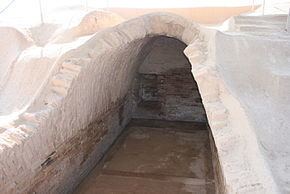Alternate name Kabnak Cultures Elamite | Type Settlement Condition In ruins | |
 | ||
Location Khuzestan Province, Iran | ||
Haft Tepe is an archaeological site situated in the Khuzestan Province in south-western Iran. At this site the remains of the Elamite city of Kabnak were discovered in 1908, and excavations are still carried out.
Contents
Map of Hafttapeh, Khuzestan Province, Iran
History
The city of Kabnak is mentioned as an important political centre during the reign of the Elamite king Tepti-Ahar, the last king of the Kidinuid dynasty ruling in the 15th century BC. He may also have been buried in the city. After his death the centre of power returned to the old capital Susa, although there is no clear evidence that Kabnak ever held real power at all. Due to the turmoil of this era it is possible the construction of Kabnak was necessary after Tepti-Ahar lost control over Susa, however this theory has not been completely confirmed by solid proof. Some centuries later another city was built at the nearby site of Choqa Zanbil.
Excavations at Haft Tepe revealed a large temple founded by Tepti-Ahar where the god Kirwashir was worshiped. Beneath the temple lay a subterranean funerary complex intended for the king and his family. Skeletal remains were found in the tomb, though it is not certain they belong to royalty. Another large structure found at the site was perhaps the foundations of a ziggurat, along with courtyards and suites of rooms. The temple complex was decorated with bronze plates and wall paintings. Administrative texts belonging to the reigns of Tepti-Ahar and Inshushinak-zunkir-nappipir were also found at the site. Recently some clay statuettes of fertility goddesses have been unearthed at the site.
Archaeology
The site is around 1.5 km by 800 meters made up of 14 mounds with the highest being 17 meters high. Haft Tepe was first surveyed by the French archaeologist Jacques de Morgan in 1908. The site was excavated in the period from 1965 to 1979 by a team from the University of Tehran, led by the Iranian archaeologist Ezzat Negahban. Since 2003 excavations have been carried out by a team of German-Iranian archaeologists, including the University of Mainz, University of Kiel and the Iranian Cultural Heritage Organization, headed by Behzad Mofidi in four seasons through 2008. In the 2006 season a number of cuneiform administrative tablets were recovered and are now being translated. Funding has now been made avail to continue the work there.
